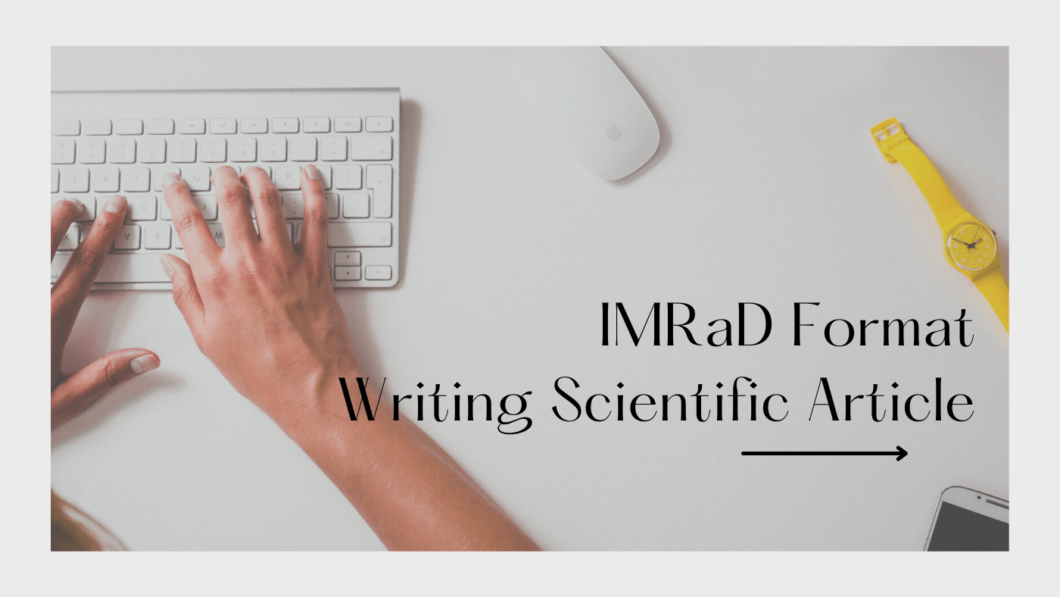As a communicator in science, when you write a research paper, you should always focus on telling your research story. This story should include why and how you initiated your research, your steps towards solving your research problem, what you solved and how it helps to advance the knowledge of your field. To make such type of communication effective, often it is suggested to structure your research paper so that editors and readers can easily find information.
The IMRaD format for structuring a research paper:
The most common format for structuring the research paper, adopted by the scientific community, is the IMRaD format. The IMRaD format contains the following sections, in order:
- Introduction
- Materials and Methods
- Results (and)
- Discussion
Though this structure was considered to be an ideal outline for scientific writing in the first quarter of the 20th century, it was not often adopted by the authors back then. In the late 70s , the wide adoption of IMRaD structure came into existence when the editors insisted on using this format so that it benefit readers and facilitate peer review process.
However, in addition to this format you have to include a title, abstract section at the beginning and references, acknowledgments and statements or conflict of interest sections at the end. Each of the section of the IMRaD format serves a different purpose in aiding the organization and structure of the scientific papers. Here, we are provided a brief discussion about each individual section of the IMRaD format.
Introduction – Illustrate your research:
The purpose of introduction is to establish a context for your research. You should provide the background that motivated you for the research. Then discuss briefly the current state and reveal the gap that you are going to address. Finally, highlight the specific questions that your work is designed to address and explain briefly how your research will solve the problem. Always provide necessary definitions or brief explanations for any terms or concepts that might sound unfamiliar to your audiences.
Materials and Methods – What you did?
Always start writing a research paper with this section. This section is straightforward and easy to complete. Once you are done with all your experiments and you are working on compiling your results and figures, you can immediately start writing this section. In this section, you should explicitly state the every details of your experiment so that the readers can duplicate your study by following your study. Also, this method is a critical sign of the authenticity of your research work. If you read some paper and you find that there is something missing from this section, then be skeptical about the work. Any original and authentic research work should be described in such a way so that anyone can reproduce it. Be very careful while writing this section.

Results – Present your findings:
In this section, you should present your findings according to the order of your investigation that you conducted to find the answer to your research problems. While presenting your findings, use appropriate graphs, tables and figures that are clearly labeled. In this section, you can provide a sketch about the summary of your research work as figure 01. This will help the reviewer to get a quick idea by just looking at your figure 01. Trust me, this helps a lot. Also, highlight the data or findings that are most impactful in your work. This will help the reader to find the key point of your work.
Discussion – Interpret your results:
While writing this section, always remember your audience. They might not have same expertise as you. Therefore, you should always interpret your results. Summarize your main findings, comment on those and connect them to the accomplishment of your research objectives. Also, mention the limitations of your work (if any) and any potential source of errors (if applicable). While explaining your results, you should cite other findings from literature to bolster your argument. Also, recommend the future direction of your work so that any researcher can pick up from your work and carry out his/her own independent investigation to push the boundaries of knowledge.
Though everyone has different preferences, it is ideal that you should always start with the materials and method section while writing a research paper. And, work on the introduction section at last. For reference, please use any reference manager software. While citing any sources, do not just cite because some other paper cited those sources. Always check back and if they fit with the context, then cite them. Finally, work on the abstract and title.
Disclaimer: No A.I. was used to write this content.


Pingback: How to Adapt Your Thesis into Journal Article? - gradbunker.com
Pingback: How to Write the Methods Section of a Research Paper?
Pingback: How to Write the Results Section of a Research Paper? - gradbunker.com
Pingback: Where to Publish Research Paper? - gradbunker.com
Pingback: How to Use Proper Manuscript Language for Scientific Article? - gradbunker.com